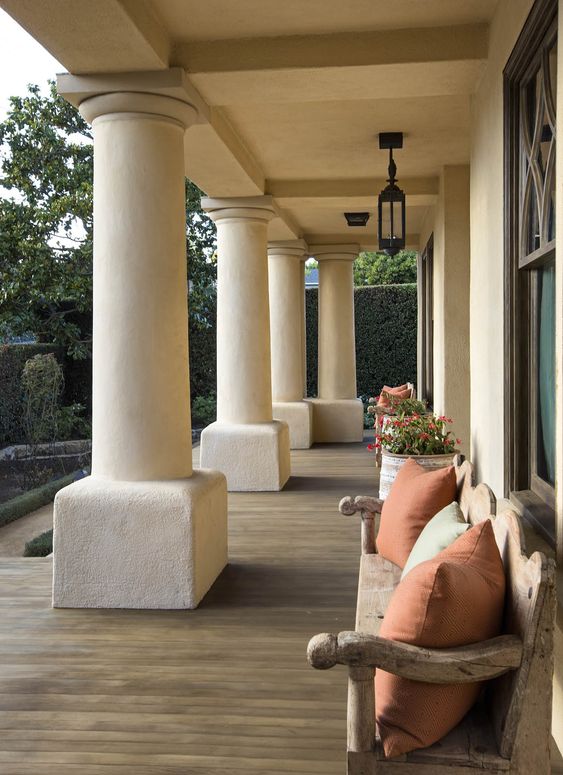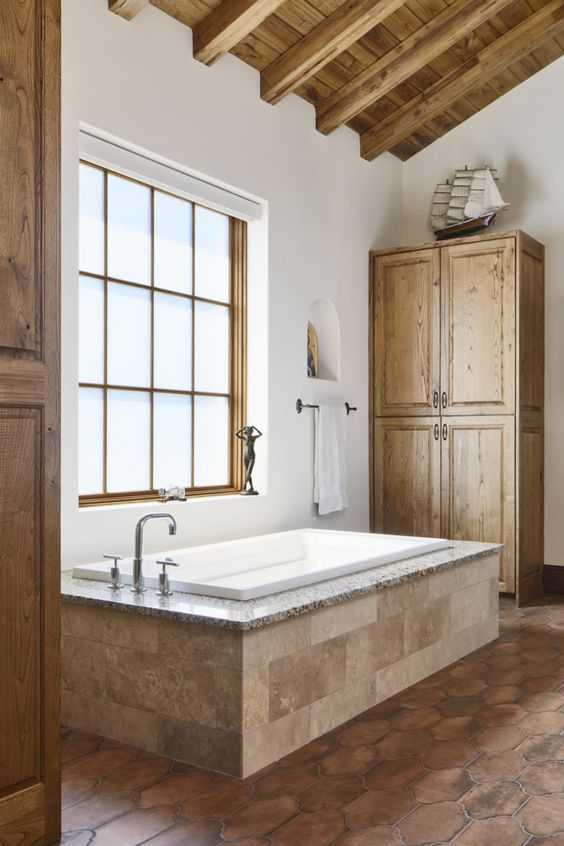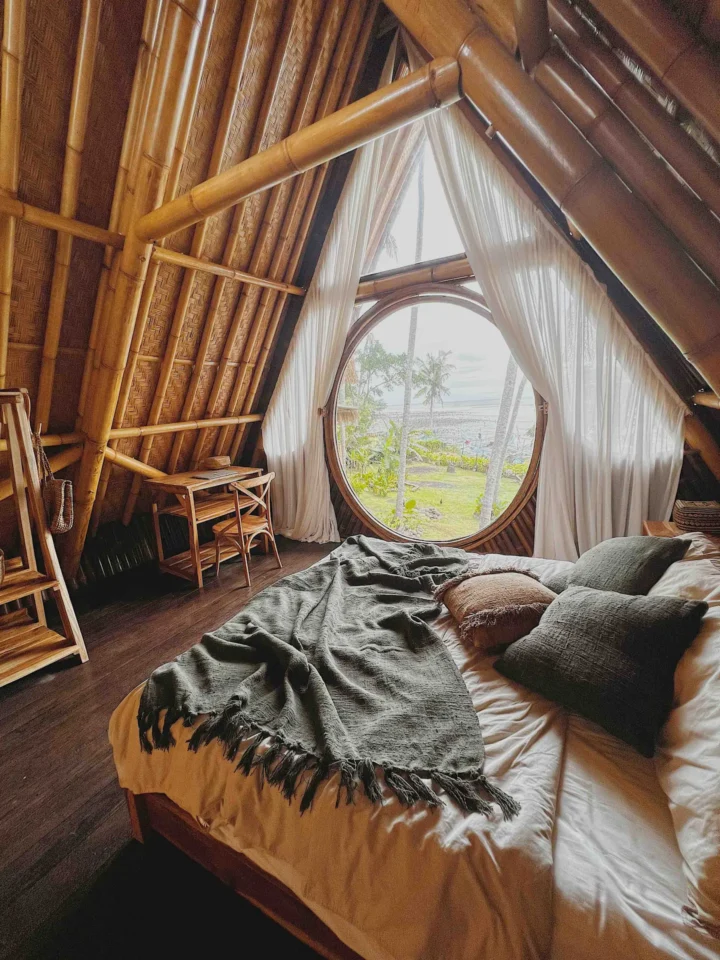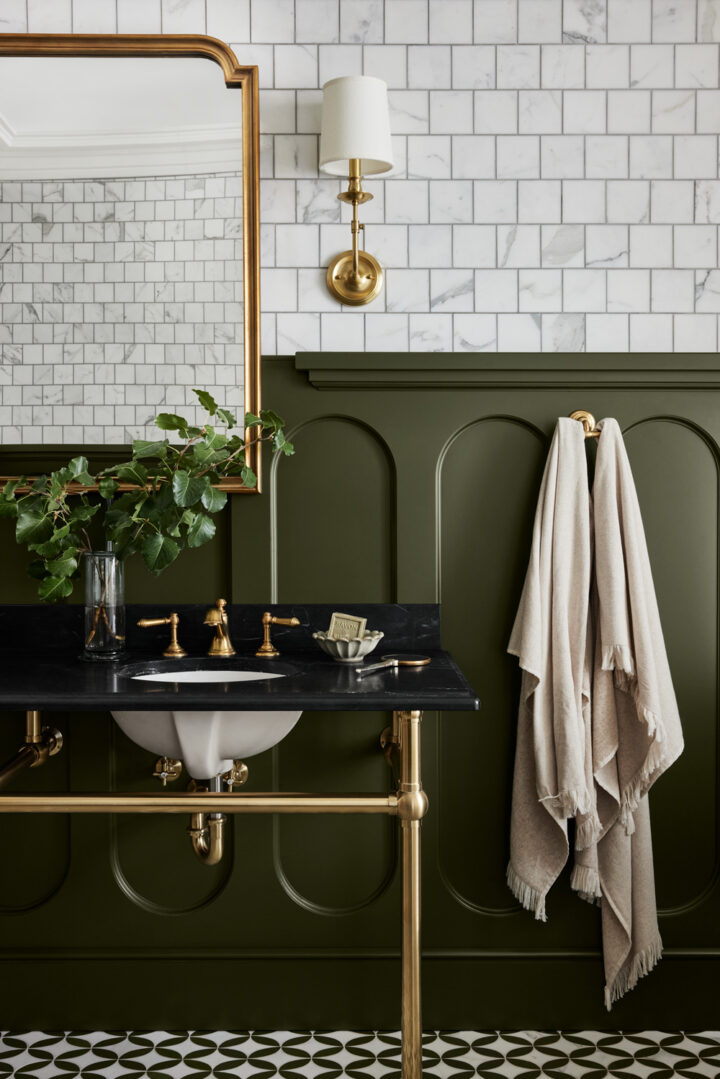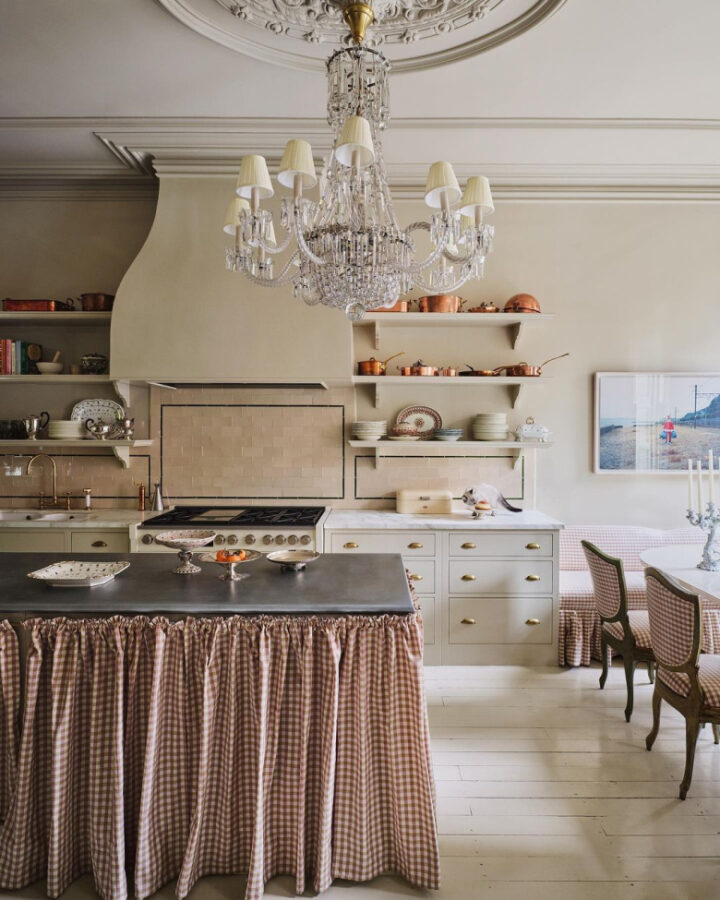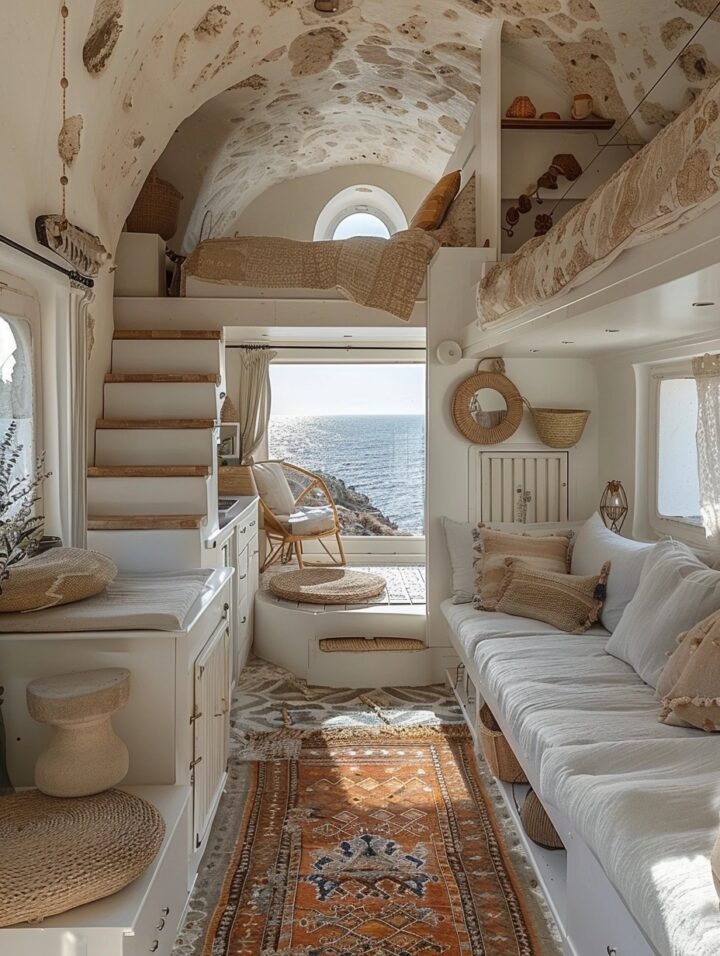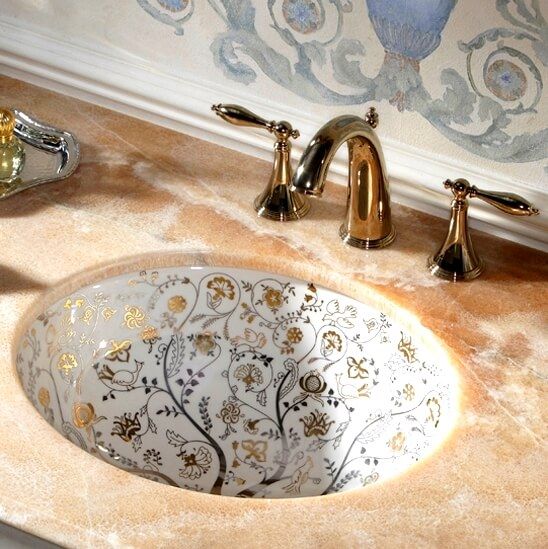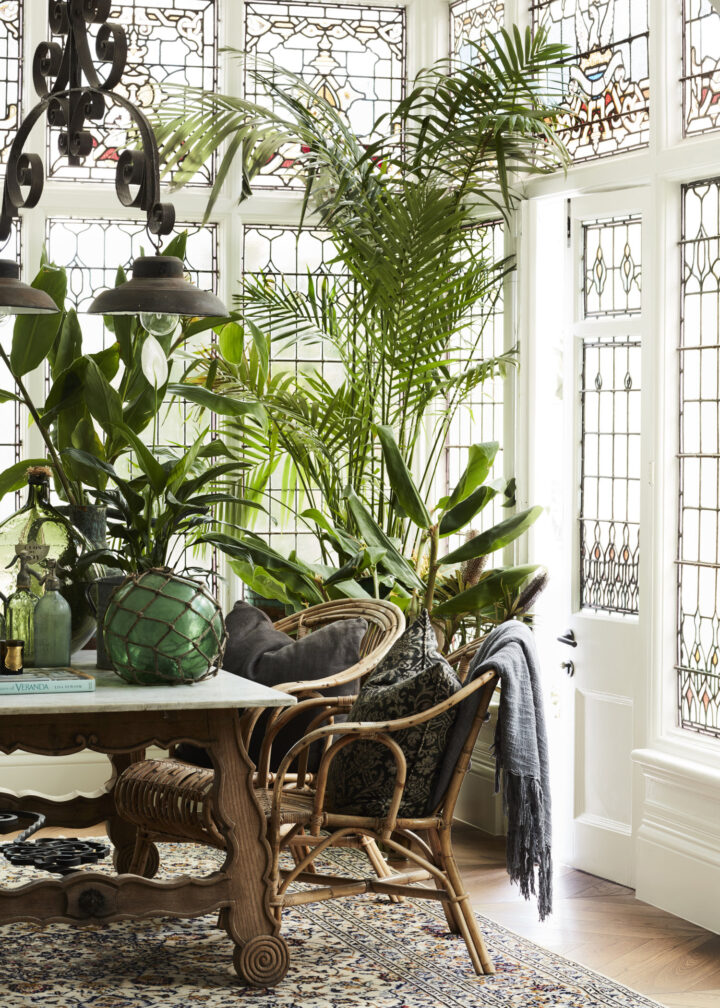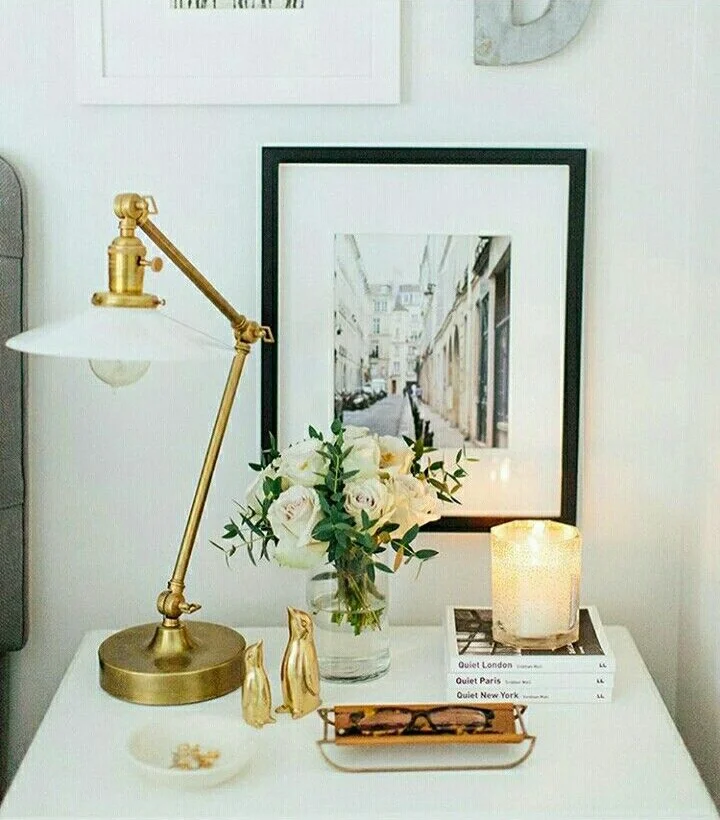Spanish style homes are influenced by the Moorish architecture of Spain, which developed in the western Islamic world including what is now Morocco and Tunisia. When California was settled, and the missionaries began to build in the 17th century, they adopted the Spanish mission-style architecture for their Churches and dwellings. Adobe, a clay-based building material with straw through it was readily available, and the translation means mud bricks. So plentiful materials were available for early buildings, that blended with the landscape and kept out the heat.
Image: apartment therapy
Three Characteristics of Spanish Houses
Thick Stucco Walls
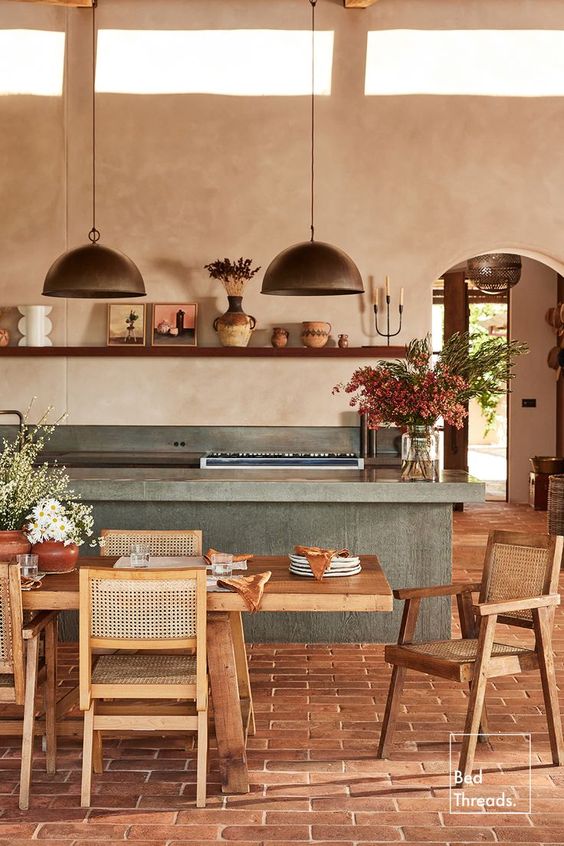
The thick stucco walls were originally erected to keep out the heat and are a characteristic of Spanish-style homes. The walls are often painted white but can be a red/brick clay color from the adobe material. Windows were small and limited and the early homes didn’t have glass, just square holes.
Interior Courtyards
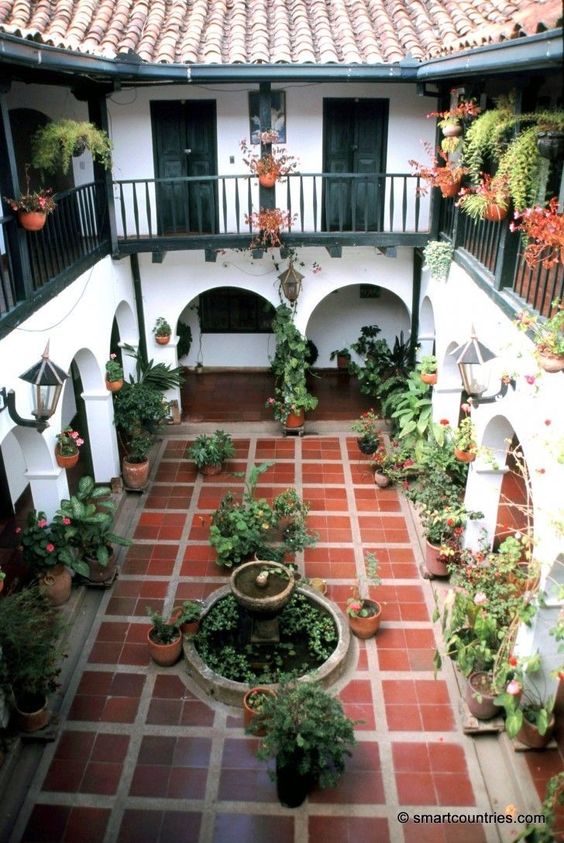
Central courtyards were common in early homes and were useful in keeping out intruders and predators. The Spanish colonization of Western America lasted longer than the original British colonization, and the architectural style lasted as well, mainly because they were ideally suited to temperate climate zones. The indoor courtyard offers a space to sit in the sun, protected from wind, often with a water feature and a lovely garden. Better still, it offers the utmost privacy from the prying eyes of the neighbors.
Limited Ornamentation and Wood Beams
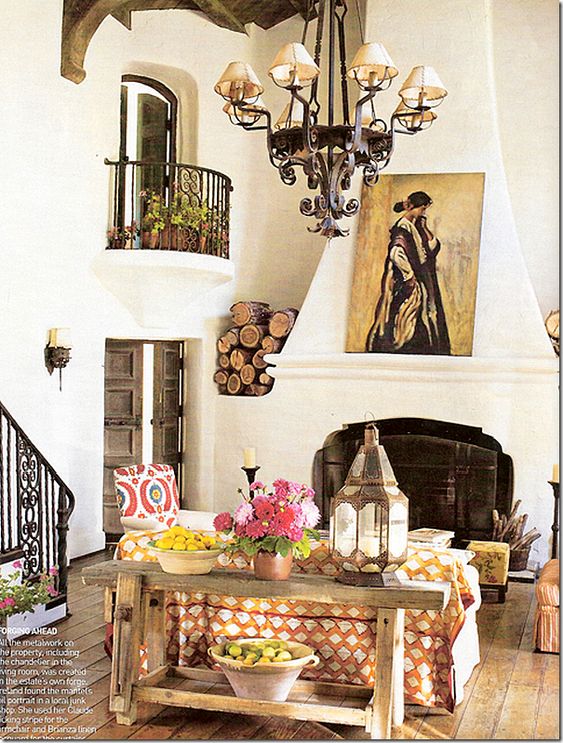
Spanish style homes are plain with little ornamentation, they have exposed wood beams and tiling offering a cool relaxed look. Other characteristics are,
- dark carved woods
- warm color palette
- Barrell style roof
- small windows
- internal courtyards
A lot of the design is quite practical, and Spanish-style homes don’t usually have hallways but are a series of rooms built onto each other. The roofs are often low-pitched and flat. This style of home is often known as Spanish Revival. Some even have a second story with a balcony and maybe turrets that were an original feature of Moorish architecture. Off-white painted stucco sets the house off to perfection, and regular repainting keeps the house looking fresh and new.
Modern Spanish Style Homes Interiors

The basic Spanish style lends itself to color and modern elements. add some warm colors and lots of textures to the mix. For winter, the tiles may need a few rugs added for warmth. If your home has the original square windows, it will lend itself to Plantar Shutters, that can easily be fitted to the wooden frames. If you are lucky enough to have an internal courtyard, there is no end to possibilities in creating an amazing garden and one or two water features. Plant some Cycads as they don’t need much care or water and always look good, and some grasses to soften the effect.
Image: LORI CLARKE
Modern Spanish Style Home Exteriors
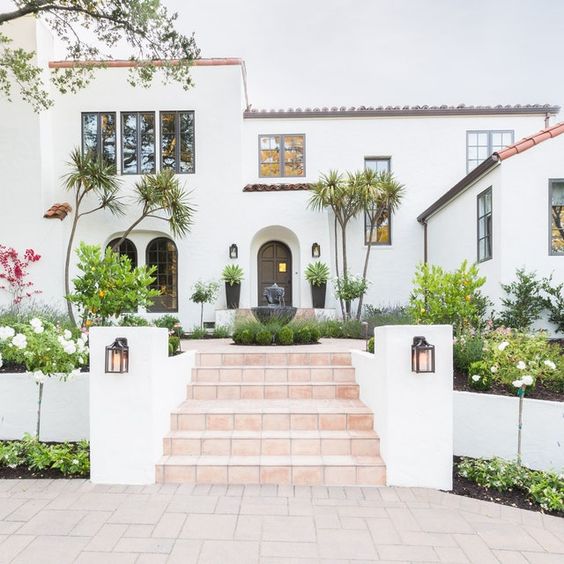
Any Spanish style home built after the 1800s is considered Spanish Revival, and different homes will have different features. For example, not all two-story homes will have a second-story balcony, but if you do have one, make it a feature by restoring the wrought iron and painting the iron black against the white of the stucco. The paint color white or off white is all-important, so consult a colorist for advice before painting.
Image: AD
Different Types of Spanish Style Houses
Spanish Colonial Revival, Mission Revival, and the plainer style Moorish Revival are all styles that you may have come across.
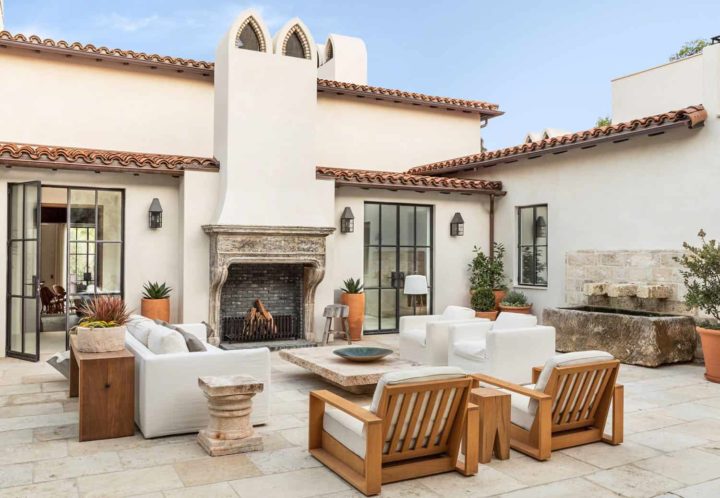
Spanish Colonial Revival began following the Panama-California Exposition in 1915, and the style continued until 1931. Starting in California and Florida where the climate is perfect for these homes, there are still many surviving, characterized by their white stucco walls and terrazzo roof tiles. Often the roof lines are multi-level to create an interesting asymmetry, with red clay tiles.
The Spanish Colonial-style Mansion That Leonardo DiCaprio Bought For His Mother
The Mission Revival style predated this era, beginning in the late 19th century, and was most popular between 1890 and 1915. Based on the design and characteristics of the earlier Franciscan missions. The mission buildings all had internal courtyards and high adobe walls with plain plaster surfaces. The exterior walls were white stucco. Often the buildings had little turrets or bell towers, and small windows with no glass in them. To see a good example of this style visit the Mission Inn portal, in Riverside, Southern California.
Images: Harrison Design, Dibello Architects


